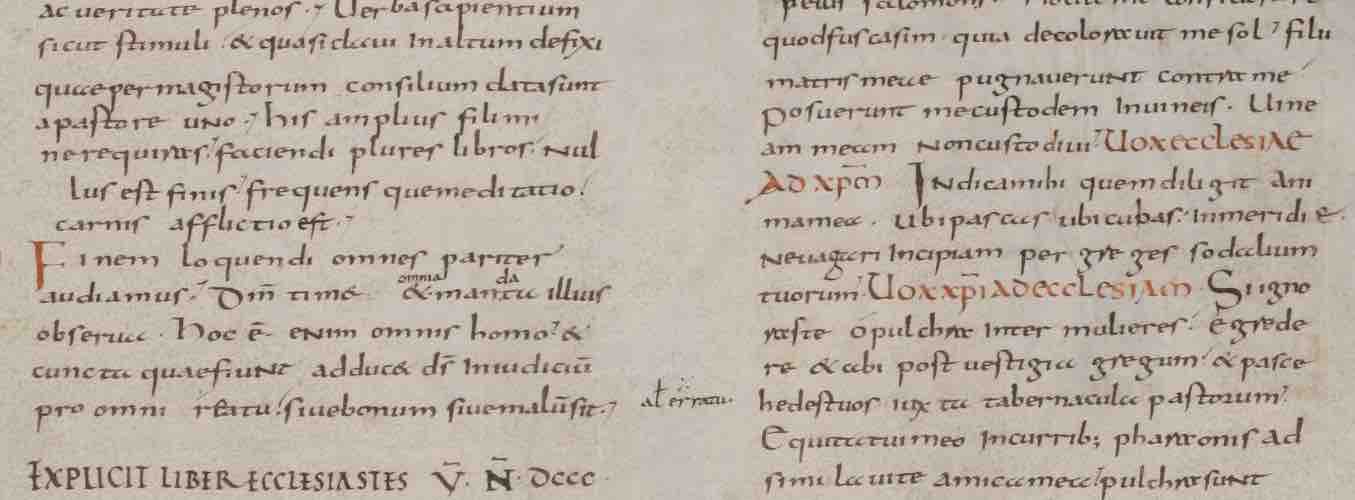

4 For the details of this discovery, see Warntjes 2013-2014.

Moreover, the textual affiliations of this complex passage left no doubt that this tract originated in Ireland, n. 6400B (fols 274r-284r): the eclipse prediction makes it clear that its author was working in or shortly after the year 754. In addition to being unique and exciting in its own right, this discovery also provided a precise date for a long continuous tract embedded in the compilation of Lat.

277r) a crucial element for the identification and the dating of some of the most intriguing materials preserved in this codex: an anonymous computist’s attempt to elaborate a method for predicting solar eclipses. 6400B for the study of the Continental transmission of Hiberno-Latin computistics, I discussed my preliminary findings with Warntjes, who, being an expert on the most technical aspects of computus, quickly detected (at fol. For this reason, soon after realising the potential importance of Lat. 3 Warntjes is the author of the most important study and critical edition of a Hiberno-Latin computistical tract to have been published in recent years: Warntjes 2010 (see also Bisagni and Warntjes 2007 Bisagni and Warntjes 2008. The ‘Hisperic’ phrase tithis turgescentis dodrantemĭuring my PhD in Old and Middle Irish at the National University of Ireland, Galway (2004–2008), I had the privilege and pleasure of sharing many coffees, meals and stimulating discussions with several fellow doctoral students (many of whom have in the meantime become colleagues and excellent scholars) one among them, Immo Warntjes (now based at Trinity College, Dublin) was responsible for kindling my interest in early medieval computus-a topic on which we have collaborated since. 2 A more detailed account (in French) of my recent discoveries and current research on the Breton transmission of Irish computistical texts can be found in Bisagni 2019. The present article offers a brief overview of some of the main discoveries and developments that were set into motion by that first encounter with a very special manuscript. 6400B has not finished yielding precious evidence for the transmission of computistical texts between Ireland, Brittany and the Carolingian Empire. 6400B can now be freely consulted at the URL 2. 1 At that time, only a black-and-white facsimile of the microfilm was available on the Gallica website, but high-definition colour images of Lat. 6400B in relation to its computistical contents (as opposed to its few vernacular glosses), I decided to investigate this matter further, and in late 2013 I was kindly allowed by Dr Charlotte Denoël ( curator of medieval manuscripts at the BNF) to study the original manuscript in detail. Realising that no modern scholar had ever studied Lat. This unit was written during the first half of the tenth century in one of the most important intellectual centres of the Loire Valley: the Benedictine monastery of Fleury at Saint-Benoît-sur-Loire. The manuscript in question was one of the several codicological units now constituting Paris, Bibliothèque Nationale de France (BNF), Lat. In an article published in 1984, Pierre-Yves Lambert briefly commented on two Old Breton glosses previously discovered by Léon Fleuriot in an early medieval manuscript containing a lengthy and heterogeneous miscellany of texts on computus-the medieval ‘science’ of time and time-reckoning. When I stepped for the first time into the manuscript reading room of the Bibliothèque Nationale de France, in Paris, on a sunny autumn day of 2013, little did I know that I was about to encounter the codex that would determine the future direction of my research. Nader onderzoek wordt uitgevoerd in het project Ireland and Carolingian Brittany: Texts and Transmission (IrCaBriTT). De manuscripten waarin zij worden gevonden wijzen zelf weer naar Bretagne van waaruit deze teksten verder moeten zijn verspreid. Specifieke elementen, zoals woorden en zinsnedes in de stijl van de Hisperica Famina, de Ierse naam Columanus (Columbanus?), en relaties met Ierse teksten zoals De ordine creaturarum, wijzen op een Ierse oorsprong van deze teksten. Verschillende manuscripten op het Europese vasteland bevatten teksten over computus - de middeleeuwse wetenschap van tijdberekening - die doen vermoeden dat zij vanuit Ierland via Bretagne over het Karolingische rijk zijn verspreid.


 0 kommentar(er)
0 kommentar(er)
